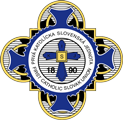Štátna volebná komisia potvrdila neplatnosť referenda

Štátna volebná komisia potvrdila neplatnosť sobotného (21. 1.) referenda o zmene Ústavy SR. Zúčastnilo sa na ňom 27,25 percenta voličov. Na platnosť referenda je potrebná viac ako 50-percentná účasť. Kompletné výsledky sú zverejnené na stránke volbysr.sk.
Predseda štátnej volebnej komisie Ladislav Orosz potvrdil, že všetci prítomní členovia bez výhrad podporili zápisnicu. “Referendum prebehlo v súlade so zákonom,” doplnil s tým, že sa neobjavili žiadne skutočnosti, ktoré by výsledok spochybnili.
Orosz upozornil, že išlo o prvé referendum od nálezu Ústavného súdu SR, ktorý vyhlásil, že výsledkom referenda je bezprostredne záväzné rozhodnutie občanov s právnou silou ústavného zákona. Poukázal tiež, že aj v tomto referende bola kľúčovou skupina ľudí, ktorí svoj postoj vyjadrili neúčasťou.
Na otázku, či súhlasia občania s tým, aby bolo možné skrátiť volebné obdobie referendom alebo uznesením Národnej rady SR odpovedalo 97,51 percenta zúčastnených kladne. Nesúhlas vyjadrilo 1,54 percenta zúčastnených.
Predseda Štatistického úradu SR Peter Peťko upozornil, že elektronizácia zmenila a zrýchlila proces spracovania. “Celková dĺžka spracovania bola tri hodiny a päť minút. O hodinu skôr ako pred ôsmimi rokmi v poslednom referende,” priblížil. V okrskoch s výpadkom elektrickej energie odovzdali klasické papierové zápisnice.
Sumarizácia prebehla povinne elektronicky prostredníctvom Integrovaného volebného informačného systému (IVIS). Prvýkrát sa v referende spracovávali tiež výsledky hlasovania doručené poštou od voličov zo zahraničia.
Najvyššiu účasť zaznamenali v Trenčianskom kraji s vyše 36 percentami voličov. Najmenej voličov prišlo na referendum v Bratislavskom kraji, odhlasovalo tam 21 percent voličov.
Medzi okresmi v účasti dominovali podľa Peťka Kysucké Nové Mesto, Topoľčany, Turčianske Teplice, Púchov a Považská Bystrica, kde prišlo vyše 40 percent voličov. Najnižší záujem o referendum, pod 16 percent, zaevidovali v okresoch Dunajská Streda, Komárno a Bratislava 1.
Najmenej občanov v rámci obcí prišlo k urnám v košickom Luníku IX. s účasťou 0,1 percenta voličov a v Lomničke s jednopercentnou účasťou. V 288 obciach všetci zúčastnení voliči odpovedali na referendovú otázku kladne. V žiadnej nezaznamenali stopercentne negatívnu odpoveď.
Policajný viceprezident Damián Imre zhodnotil priebeh referenda ako pokojný, polícia zaznamenala iba drobné incidenty. Išlo napríklad o nespokojnosť voličov, ktorí prišli na referendum neskoro, či nevhodnú politickú agitáciu. Celkovo objasňuje polícia dva priestupky. Súviseli s extrémistickými znakmi na bilbordoch.
Deviate referendum v histórii samostatnej Slovenskej republiky inicioval Smer-SD s ďalšími opozičnými stranami.
The State Electoral Commission Confirmed the Invalidity of the Referendum
Bratislava, 22 January (TASR) – The State Election Commission has confirmed the invalidity of Saturday’s (21 January) referendum on changes to the Slovak Constitution. 27.25 percent of voters took part in the referendum. A turnout of more than 50 percent is required for the referendum to be valid. The full results are published on volbysr.sk.
Ladislav Orosz, chairman of the State Election Commission, confirmed that all members present supported the minutes without reservation. “The referendum was held in accordance with the law,” he added, adding that no facts had emerged to cast doubt on the result.
Orosz pointed out that this was the first referendum since the ruling of the Constitutional Court of the Slovak Republic, which declared that the result of a referendum is an immediately binding decision of the citizens with the legal force of a constitutional law. He also pointed out that even in this referendum there was a key group of people who expressed their position by not participating.
When asked whether citizens agreed that the electoral period could be shortened by referendum or by a resolution of the National Council, 97.51 per cent of those who took part answered in the affirmative. 1.54 per cent of the participants expressed their disagreement.
Peter Petko, Chairman of the Statistical Office of the Slovak Republic, pointed out that computerization has changed and accelerated processing. “The total processing time was three hours and five minutes. One hour earlier than eight years ago in the last referendum,” he added. In precincts with power outages, they handed in traditional paper minutes.
The tabulation was compulsorily done electronically through the Integrated Voting Information System (IVIS). For the first time, the referendum also processed the results of votes received by post from voters abroad.
The highest turnout was recorded in the Trenčín region, with over 36 percent of voters. The lowest number of voters came to the referendum in the Bratislava region, with 21 per cent of voters voting there.
Among the districts, Kysucké Nové Mesto, Topoľčany, Turčianske Teplice, Púchov and Považská Bystrica dominated the turnout, with more than 40 percent of voters turning out, according to Petek. The lowest interest in the referendum, below 16 percent, was registered in the districts of Dunajská Streda, Komárno and Bratislava 1.
The lowest number of citizens within the municipalities came to the polls in Lunik IX in Košice, with 0.1 per cent of voters participating, and in Lomnička, with one per cent participation. In 288 municipalities, all participating voters answered the referendum question in the affirmative. In none of them was there a one hundred percent negative answer.
Police vice-president Damián Imre assessed the referendum as peaceful, with only minor incidents recorded by the police. These included dissatisfaction from voters who arrived late for the referendum or inappropriate political agitation. In total, the police clarified two offences. They were related to extremist signs on billboards.
The ninth referendum in the history of the independent Slovak Republic was initiated by Smer-SD and other opposition parties.
